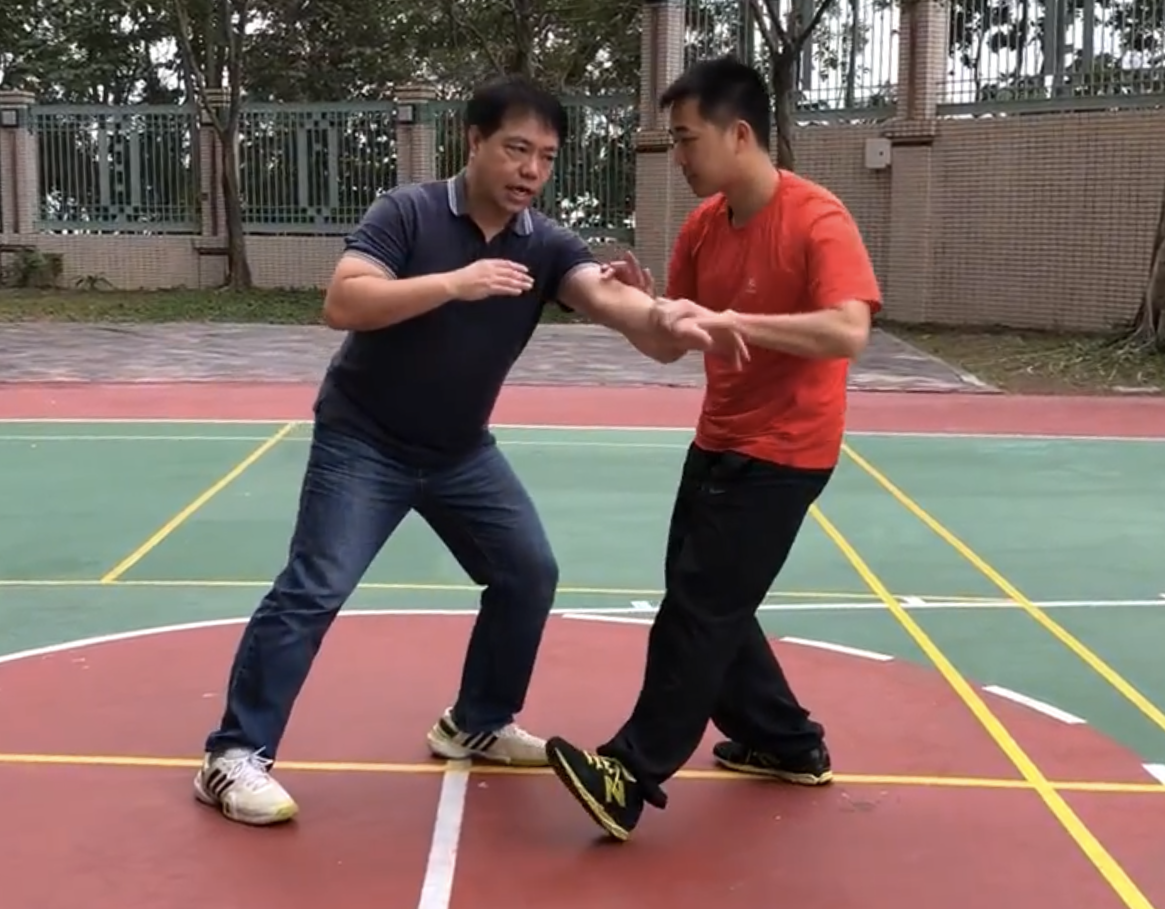
Doing the Pushing Hands practice with a partner is the best method of training the Five Strategies and Thirteen Tactics mentioned earlier. This practice will develop the sensitivity of our arms enabling us to detect our opponent’s intentions. It will also help to speed up our own reactions.
Pushing Hands practice is not designed to train us to fight, though it does link the combat strategy and tactics with the practical application of the Hand Form. This training, using a limited number of actions in a limited number of situations, conditions us to respond to our opponent’s movements in a natural way. Only when we have a good understanding of the Pushing Hands should we start to learn the Self-Defence.
The Tai Chi Chuan Classic tells us that once our opponent has just started a move then we should counter him before he can complete the movement. We can only accomplish this if we have attained a high degree of sensitivity which will allow us to detect any such movement. Such sensitivity can best be developed through the Pushing Hands practice.
There are eight types of Pushing Hands. Five are ‘fixed step’, meaning that the sole of the front foot may be raised or lowered provided the heel rests on the ground, but that no other movement of the feet is permitted. The other three styles are ‘moving step’ and develop our ability to move forwards, backwards and to the side in a nimble manner while applying the Pushing Hands Techniques.
When starting to learn Pushing Hands we must concentrate on adopting correct stances and postures and relaxing during the movements. Next we must ensure that we adhere to our opponent’s arms so that we can employ the ‘radar’ of our sensitivity to detect his intentions and then use the Eight powers in combination with the Five Directions to thwart these intentions. We must affect his balance by using his own force against him and then attack his weak points. A good stance and sense of balance are crucial.
There are three main stages in Pushing Hands:--
- The first and highest stage is where the sensitivity of our hands is such that our opponent’s intentions are an open book to us while our intentions are a source of mystery to him. He will be completely frustrated, unable to attack or defend;
- The second stage is where our sensitivity is not fully developed and so we can only determine our opponent’s intentions at the last minute and so may or may not be able to react in time to counter his attack;
- The third stage is where our sensitivity is so poor that we cannot detect our opponent’s attack at all. This attack will then be successful and we will be defeated. If we are to be genuine Tai Chi masters, we must be able to apply and combine the Thirteen Tactics freely and fluently. Practicing Pushing Hands with such a master is like rowing a boat in a rough sea, since our actions will always be beyond our control. Our attacks would be too slow and too obvious to be effective, while our defence would also be inadequate to respond to his attacks. In every martial art knowledge of technique, in itself, is useless; constant, thoughtful, concentrated practice is essential. Only in this way can we reach the first stage in Pushing Hands.
